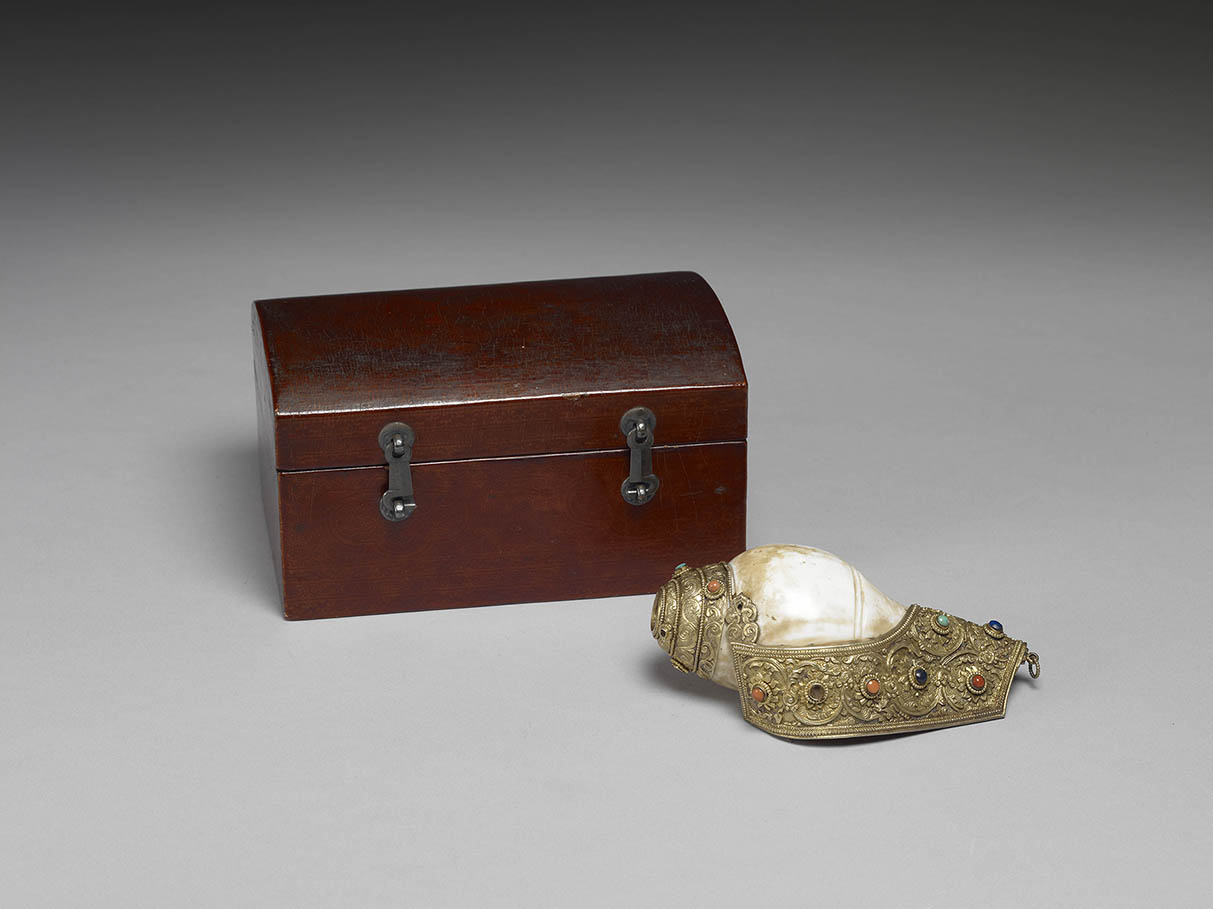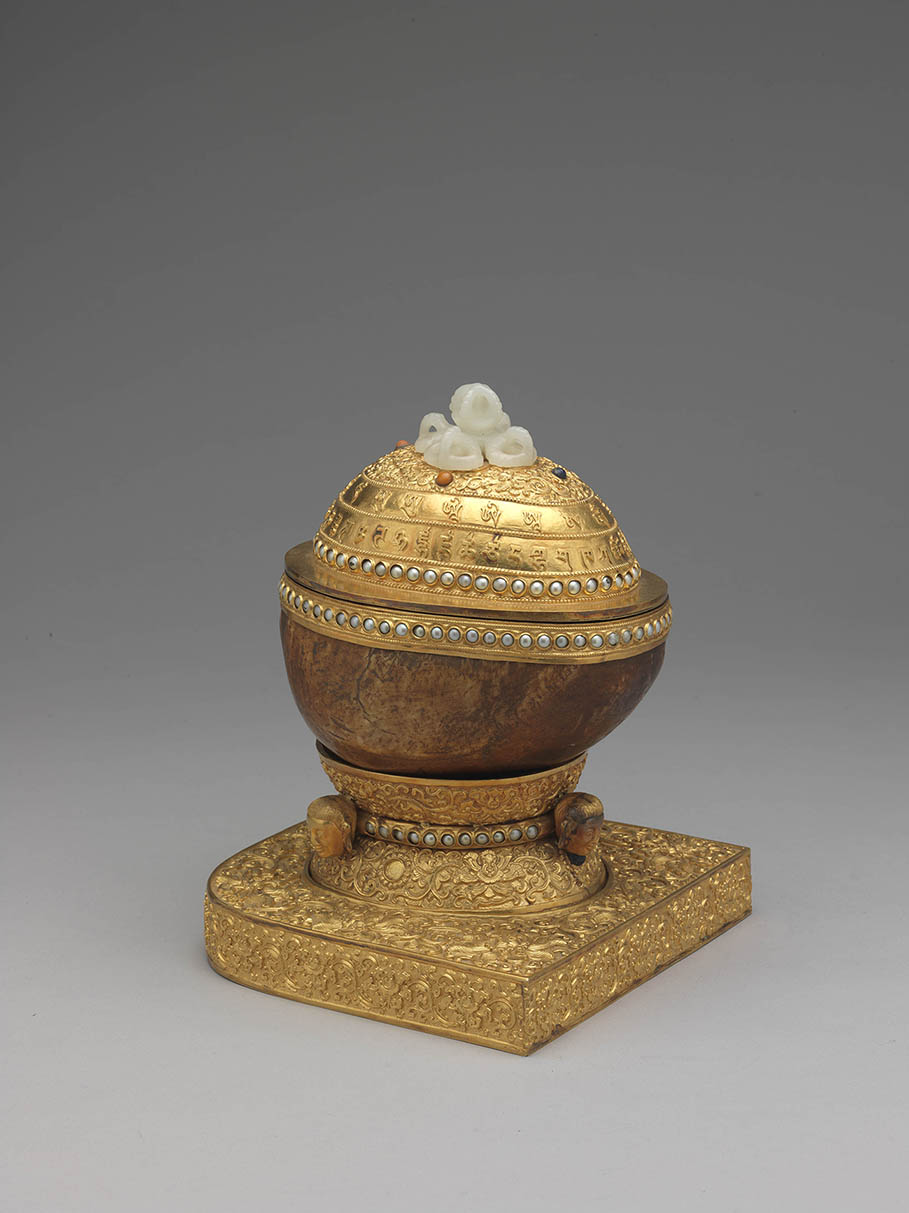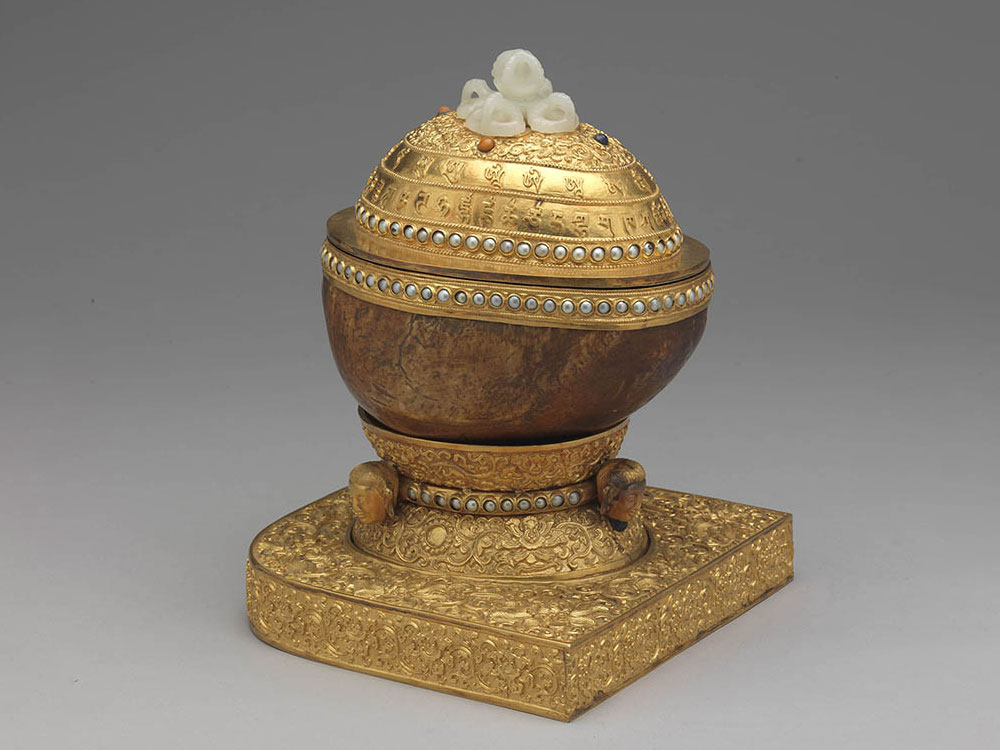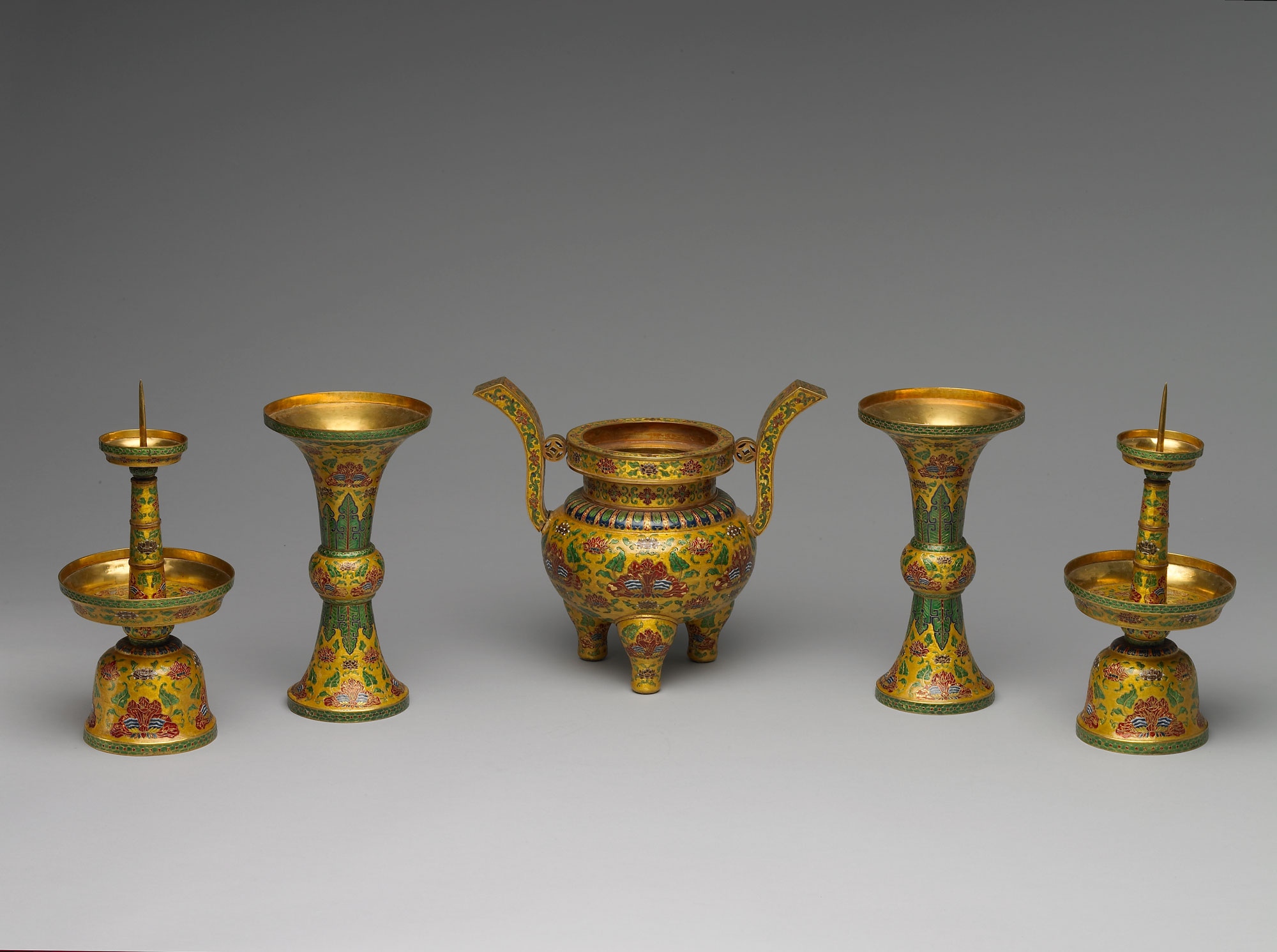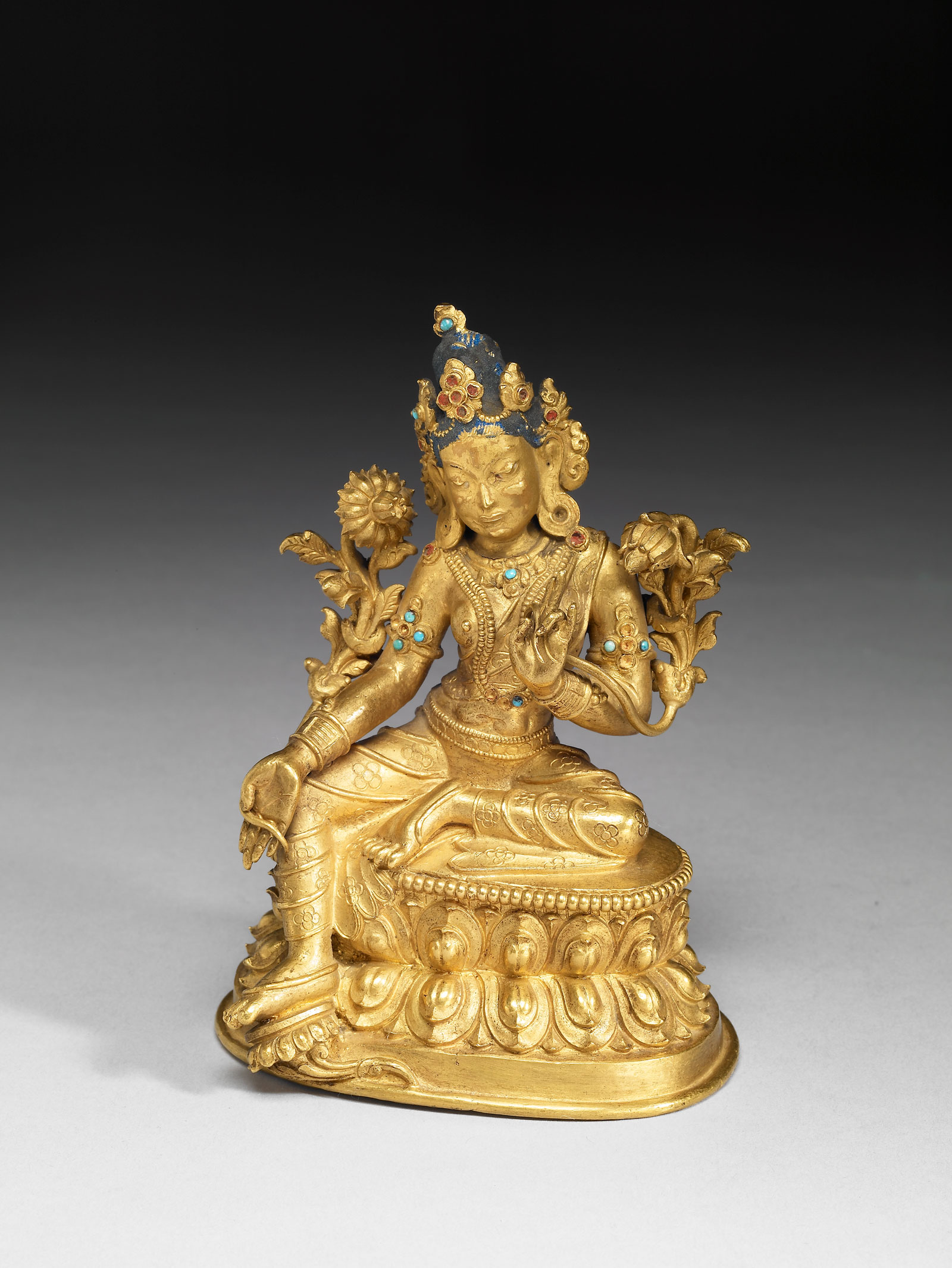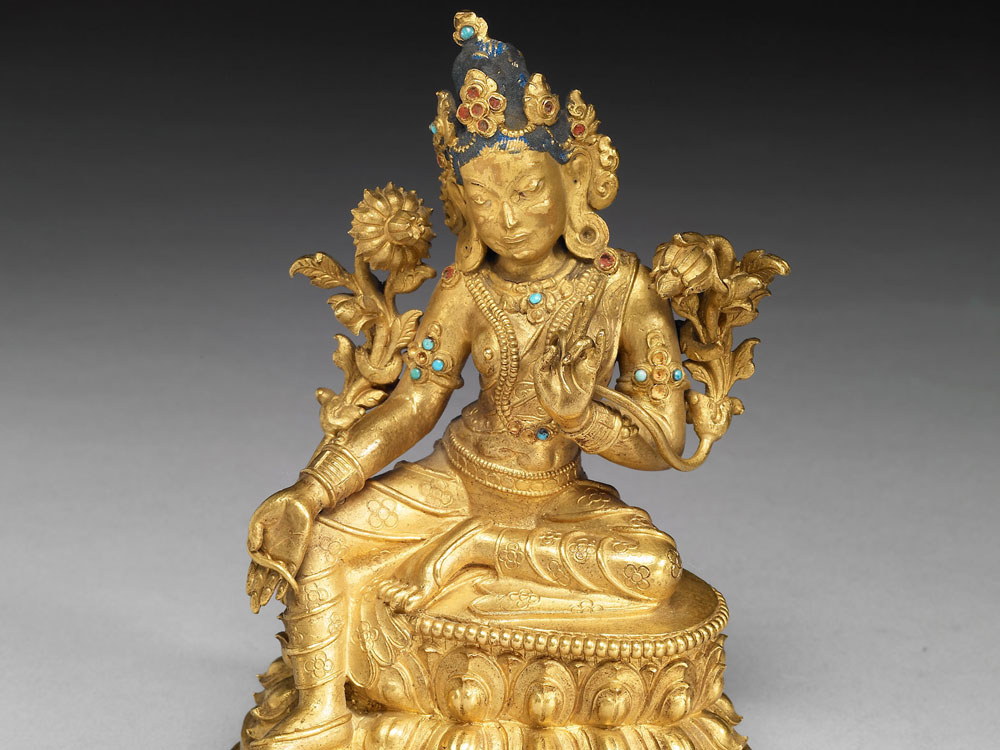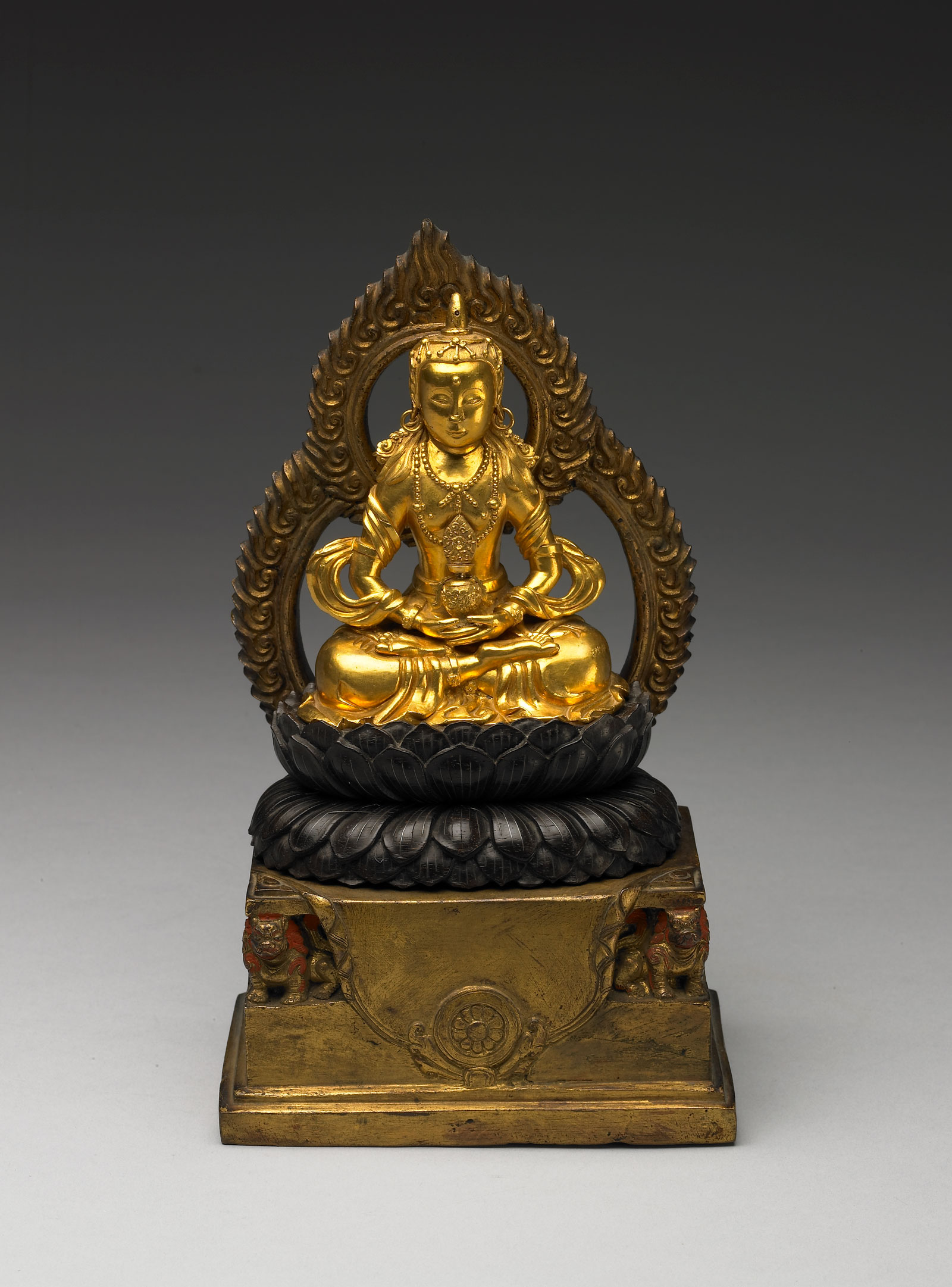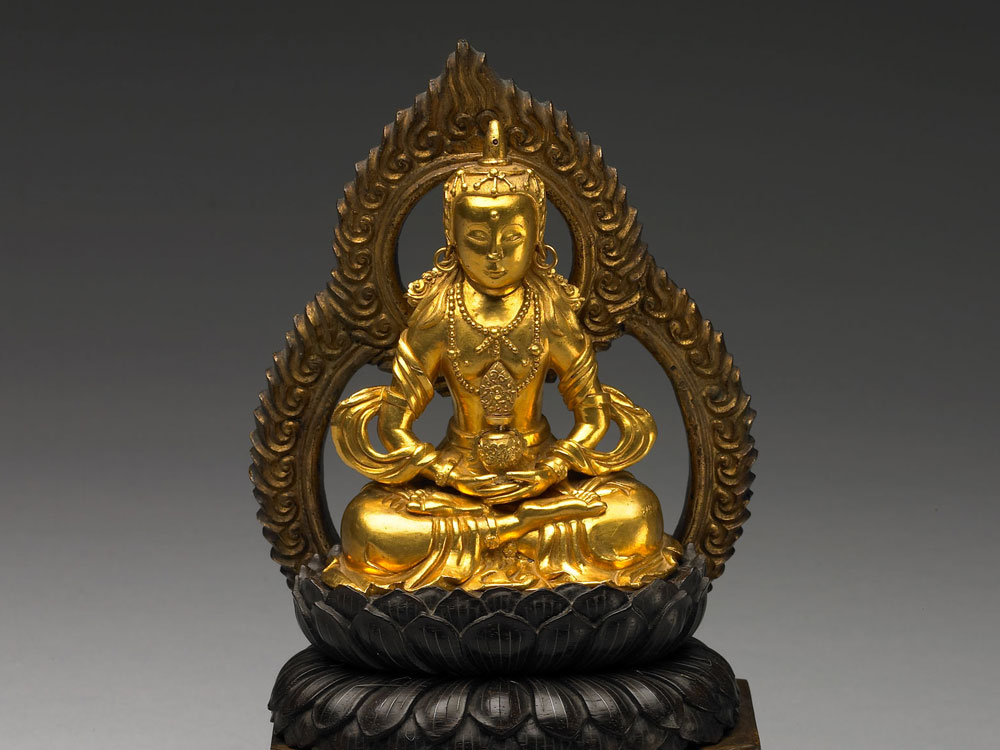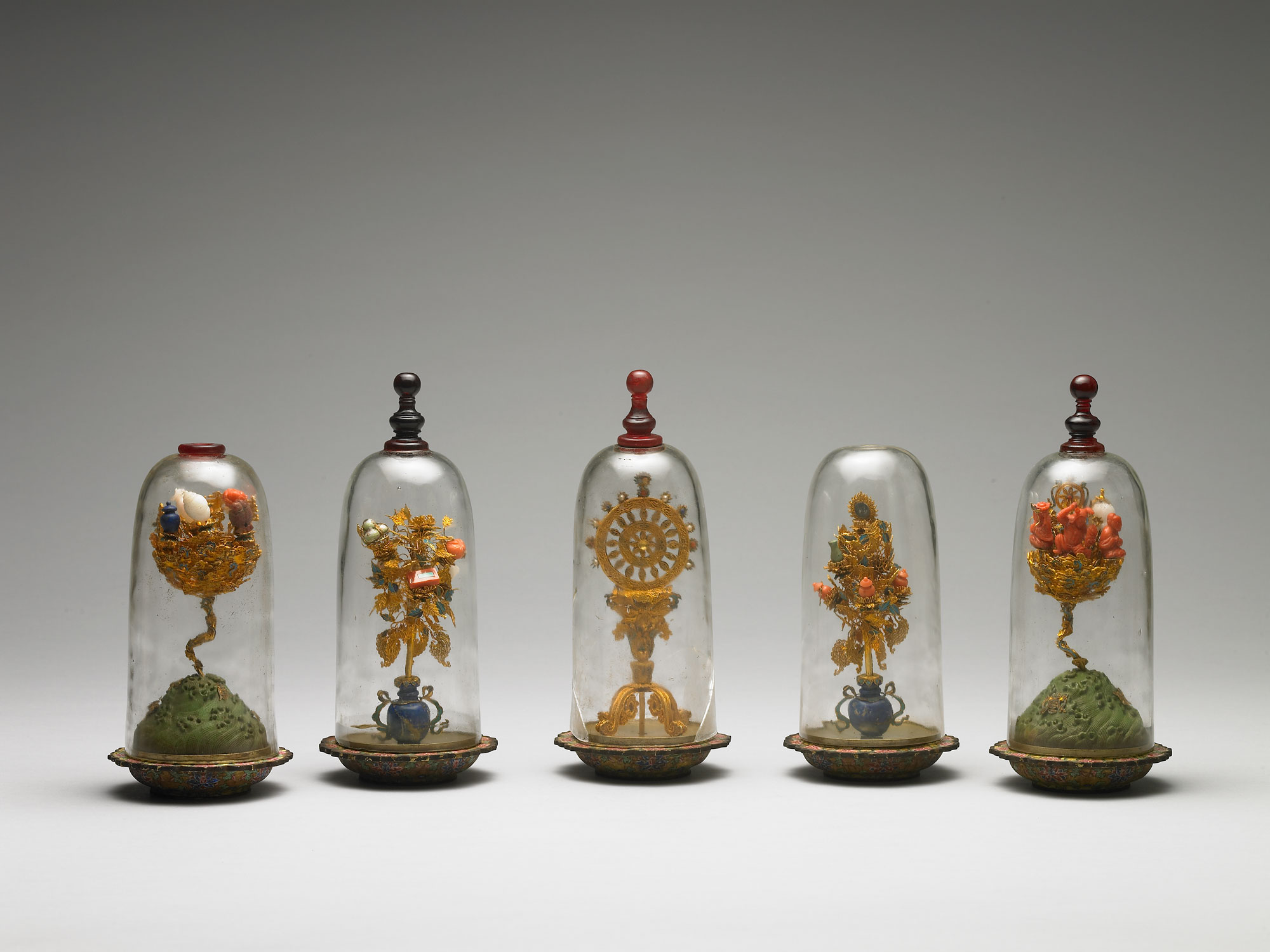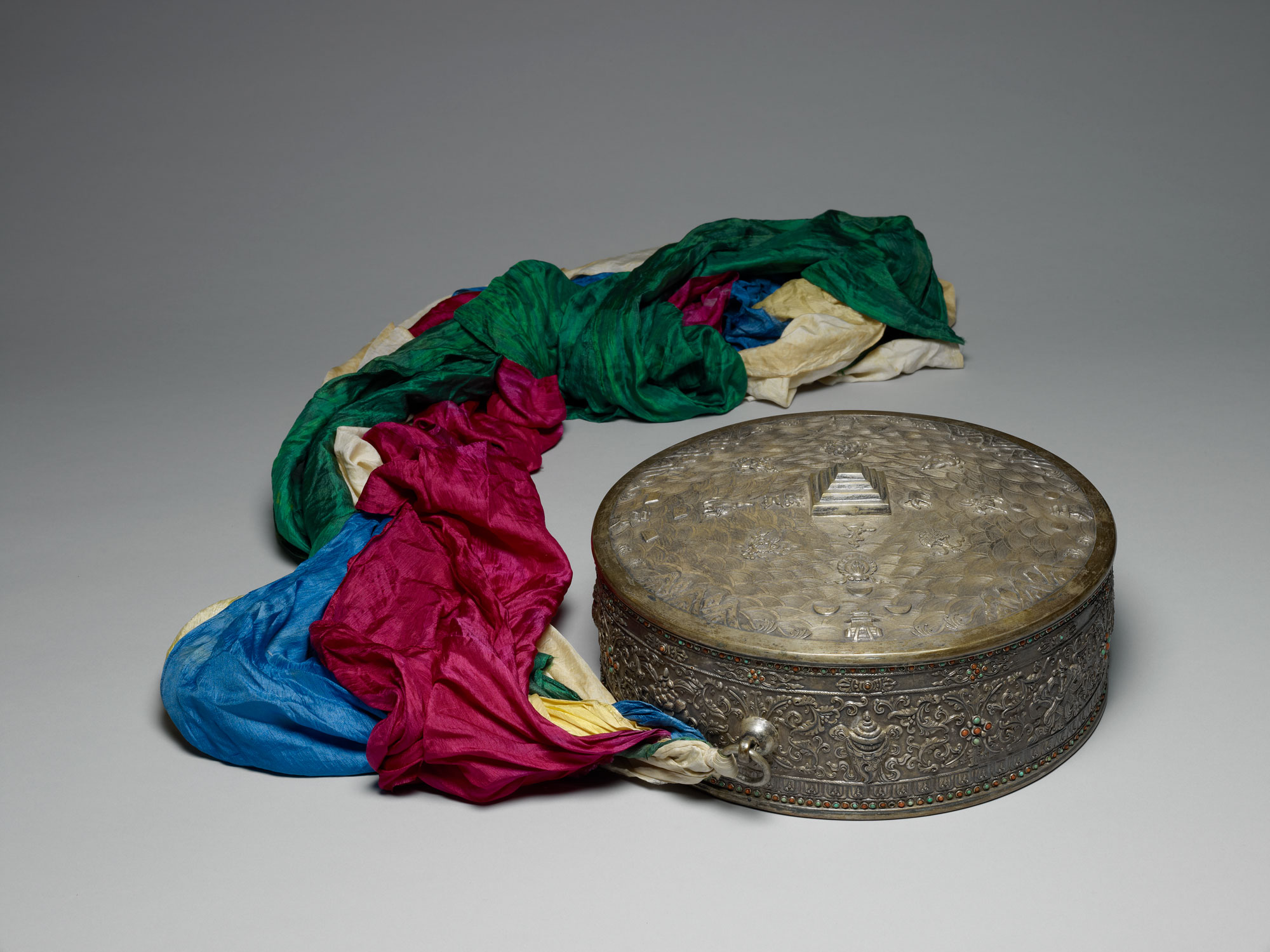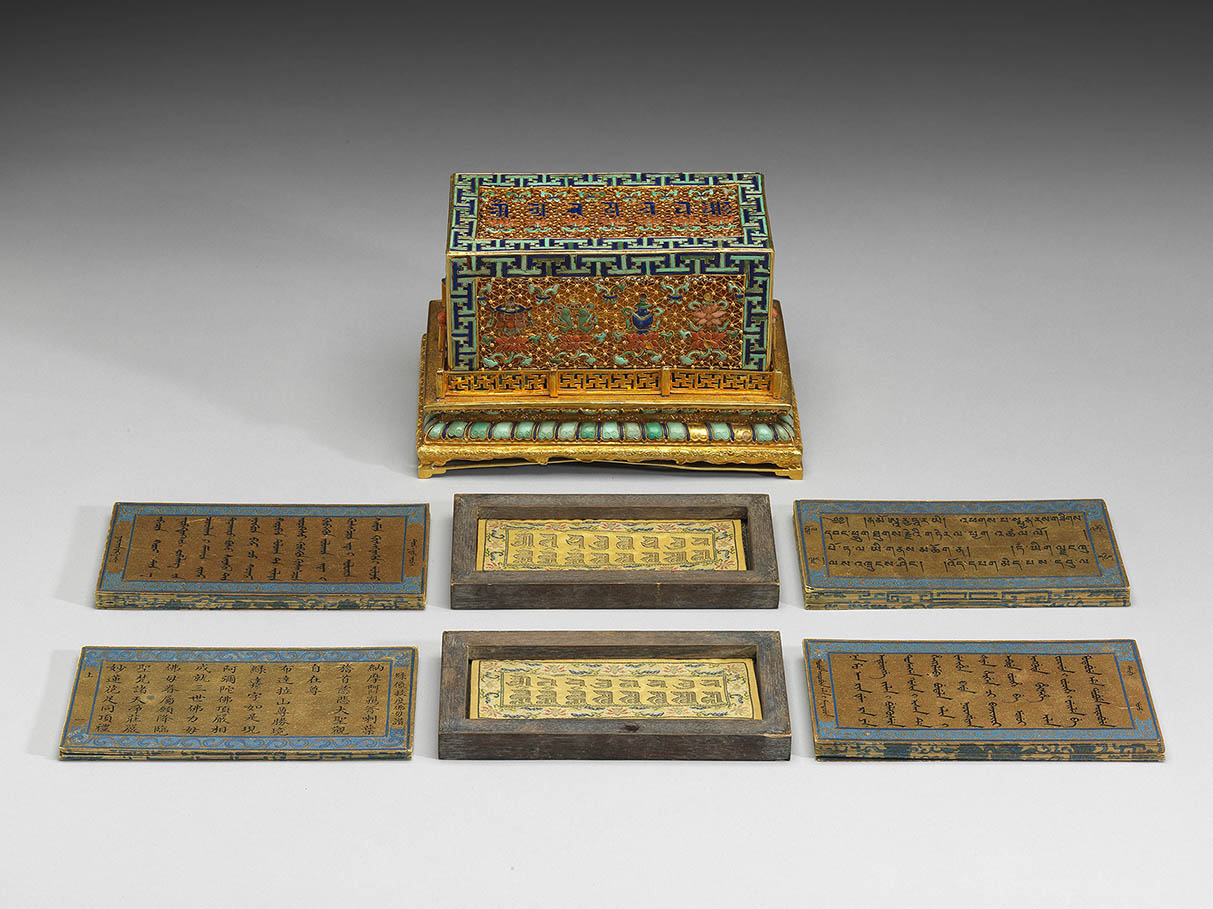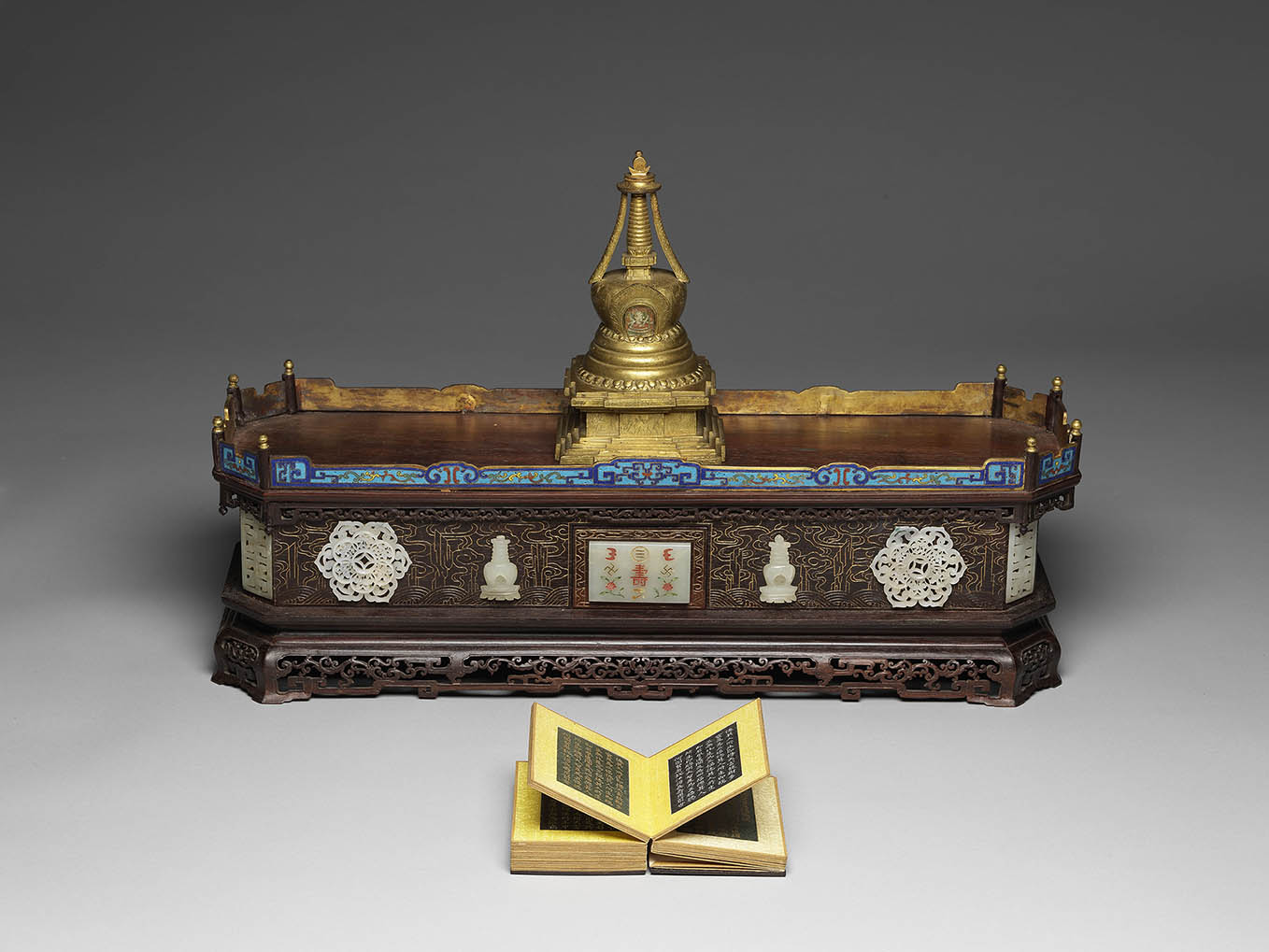A Glimpse into the Lives of Khubilghans
The Gelug lineages of khubilghans were mostly formed during the Qing dynasty. They were active not only in Tibetan regions, but also in Outer and Inner Mongolias; even the capital of Beijing had eight important Khutukhtus based there. The khubilghans in different regions played different roles and exerted varying levels of influence. The important ones endorsed by emperors were more than religious teachers; they were strongly influential on the political and economic development of their regions and were effectively preeminent politico-religious leaders. This section showcases a variety of objects giving an overview of the khubilghans' personal lives as well as their religious and political work during the Qing dynasty. The Tibetan Buddhist artifacts housed in the Qing court also offer a glimpse into the deep influence of khubilghans on the faith of the Qing imperial household.
Treasures from Imperial Buddhist Shrinerooms
The Qing imperial complex was dotted with many Buddhist shrinerooms and temples, mostly devoted to the worship of Tibetan Buddhist deities, which shows the strong influence of the living Buddhas on the Qing court's religious faith. This sub-section displays Buddhist statues, sacrificial vessels, religious implements, niches for statues, and stūpas that were once housed in the Yangxindian Hall, the Yuqinggong Palace, the Cininggong Palace, and the Chengde Summer Resort.
(1) Yangxindian Hall - The Emperor's Living Quarters
Starting in the early Yongzheng (1722-1735) period, the Yangxindian Hall gradually took on the function of the emperor's study and office. In the 11th year of the Qianlong reign (1746), the emperor had a Buddhist retreat constructed on the south side of the Xinuange Chamber, the first in the Forbidden City. The imperial Buddhist shrinerooms centered around a stūpa were dedicated to the worship of thangkas and statues. The religious implements in the Yangxindian Hall were mostly stored in their own gold-decorated lacquer boxes, which indicates the importance accorded to these items.
Left spiral conch
- Qing dynasty (1644-1912)
The white conch, seen as a sacred emblem in India, represents the ubiquity and eternity of the Buddha's teaching, which saves all sentient beings from suffering. In Tibetan Buddhism, the white conch shell is often used as a musical instrument or as a libation vessel.
Kapāla offering bowl with a portrait of Yamāntaka painted inside
- Produced by imperial workshop, Qianlong reign (1736-1795), Qing dynasty
The inscription on the underside of the bowl indicates that the base and the portrait inside the bowl were produced by the imperial workshop during the late Qianlong reign.
(2) Yuqinggong Palace - The Crown Prince's Residence
Constructed in the 18th year of the Kangxi reign (1689), the Yuqinggong Palace was the crown prince's residence; its main hall was known as the Dunbendian Palace. After the Qianlong emperor abdicated, he continued to live in the Yangxindian Hall, traditionally the emperor's living quarters, thus his successor, the Jiaqing emperor, remained in the Dunbendian Palace. Buddhist halls were located in the chambers on the east and west sides of the Dunbendian Palace. Judging by the inscriptions and the style, the statues and religious implements originally housed therein were all made in the late Qianlong period. Splendid and yet possessing an air of serenity, each of these objects is one of a kind.
(3) Cininggong Palace – The Living Quarters of the Empress Dowager
Following Ming custom, the Qing empire also used the Cininggong Palace as the empress dowager's bedchamber. Residents of the palace over time included the Empress Dowager Xiaozhuang (1613-1688) of the Kangxi period and the Empress Dowager Chongqing (1693-1777) in the Qianlong reign. The Qianlong emperor, who was devoted to his mother, would plan rituals to be held in sites such as the Buddhist shrineroom in the Cininggong Palace to celebrate the empress dowager's birthday.
(4) Chengde Summer Resort - The Capital on the Frontier
Construction of the Chengde Summer Resort was completed in the 42nd year of the Kangxi reign (1713), and the Qianlong emperor later expanded the scale of the complex. Both emperors spent roughly half a year there to escape the summer heat of Beijing and received many Mongolian and Tibetan nobles and dignitaries, making Chengde an important frontier center of political and military power for the Qing empire. Qing emperors also had monasteries and temples built there, and religious rituals were held to consolidate their relationships with northern nomadic tribes through their common faith of Tibetan Buddhism.
In Praise of Green Tārā scripture with an openwork box inlaid with semi-precious stones
- Produced by imperial workshop, Qing dynasty (1644-1912)
The scripture In Praise of Green Tara is essentially the "Eulogy to the Twenty-one Tārās" in Tibetan Buddhism, but the translated Chinese title differs from the traditional Chinese translation of the Tibetan sūtra. In addition, the spelling of the mantra is in accordance with the Qinding Tongwen Yuntong (Imperially Endorsed Rhyme Systems in Standard Writing) issued in the 15th year of the Qianlong reign (1750), so this work was likely produced by imperial workshop during the Qianlong period.
Both the upper and lower cover planks are decorated with three-colored silk and a Sanskrit Tārā mantra in Ranjana script, and the lower cover plank is painted with Nila Jambhala, Pita Jambhala, Vajrapāṇi, and Sita Jambhala. The text is stored in a gold-plated case resting on a Sumeru throne. The throne has openwork swastika (卍) railings on top, and is carved with foliage and lotus petal patterns and inlaid with turquoise. The openwork case lid is decorated with the Eight Auspicious Symbols made of amber, turquoise, coral, lazurite, and giant clams. The top of the lid bears the mantra of Mañjuśrī.
Gilt bronze stūpa with the Five Merits Sūtra on a wooden pedestal
- Qing dynasty (1644-1912)
Inside the drawer of the wooden pedestal inlaid with jade is the Five Merits Sūtra, and on top of the pedestal is a gilt bronze Tibetan-style stūpa. Under the dome is a circular Vijaya stūpa with three steps, and in the niche is a colorful painted Uṣṇīṣavijayā. Shapes of animals are etched into the base of the stūpa, including an elephant, and beneath the stūpa are carved cross-vajras. The fluid carved lines, sumptuously round shape of the stūpa, and balanced proportions make this item a fine specimen from the workshop of the First Jebtsundamba Khutuktu (1635-1723) in Mongolia.
